This was my fourth day in Spiti valley, and with every turn, I was getting more acclimatized and acquainted with this middle land. I didn’t have to spend hours to learn that this cold desert, a heady mix of barren mountains, unexpected bursts of green fields, and deep gorges formed by the fierce Spiti River, is also a melting pot of cultures. My visit to Tabo and Dhankar, had made me intelligent of what to look for. The signs of Hinduism in Kinnaur, had been gracefully replaced by those of Buddhism, and wouldn’t be found till Keylong. I knew my way from Kaza, the last stop on my Spiti journey, and also the administrative capital of Spiti. I were to spend three days here, hoping from one village to the other, looking for my cultural murals, one monastery to the other, one story to the story.
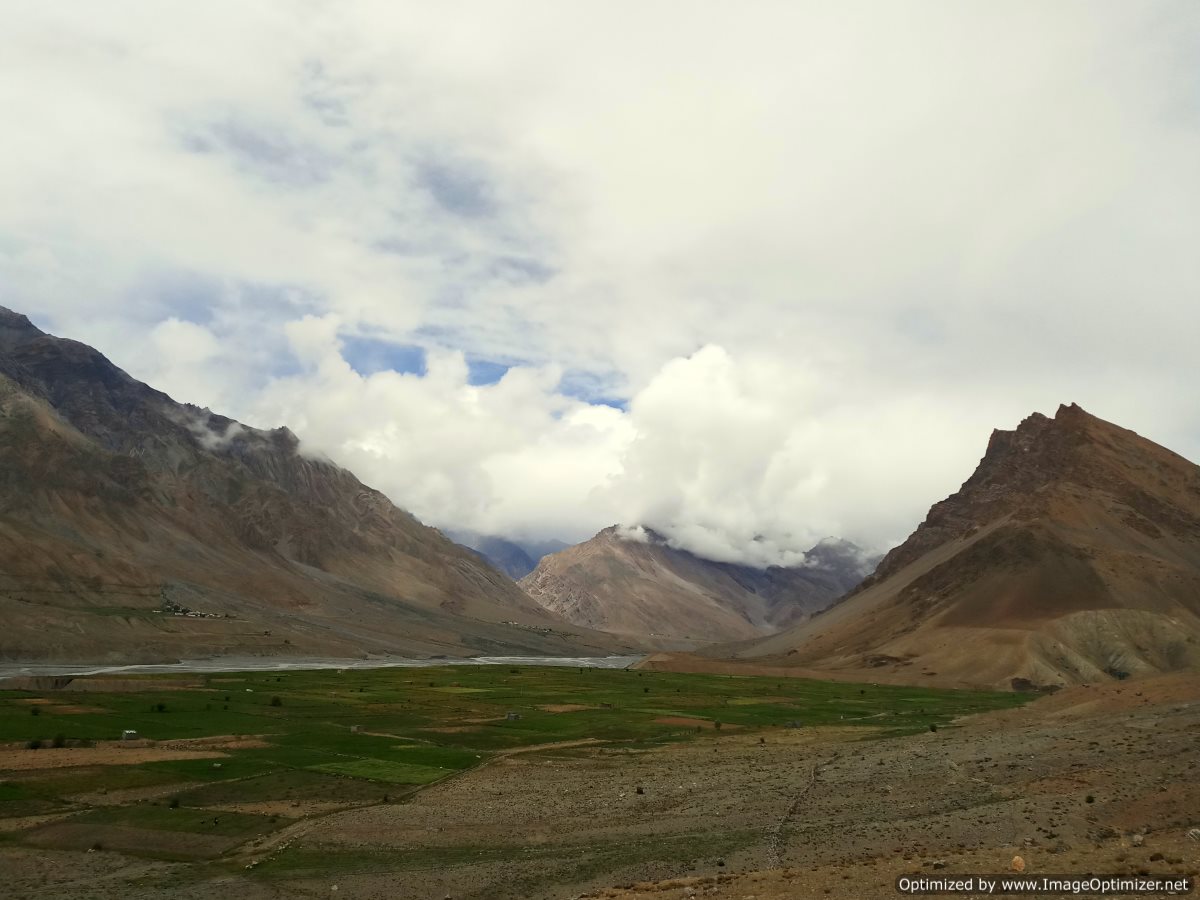
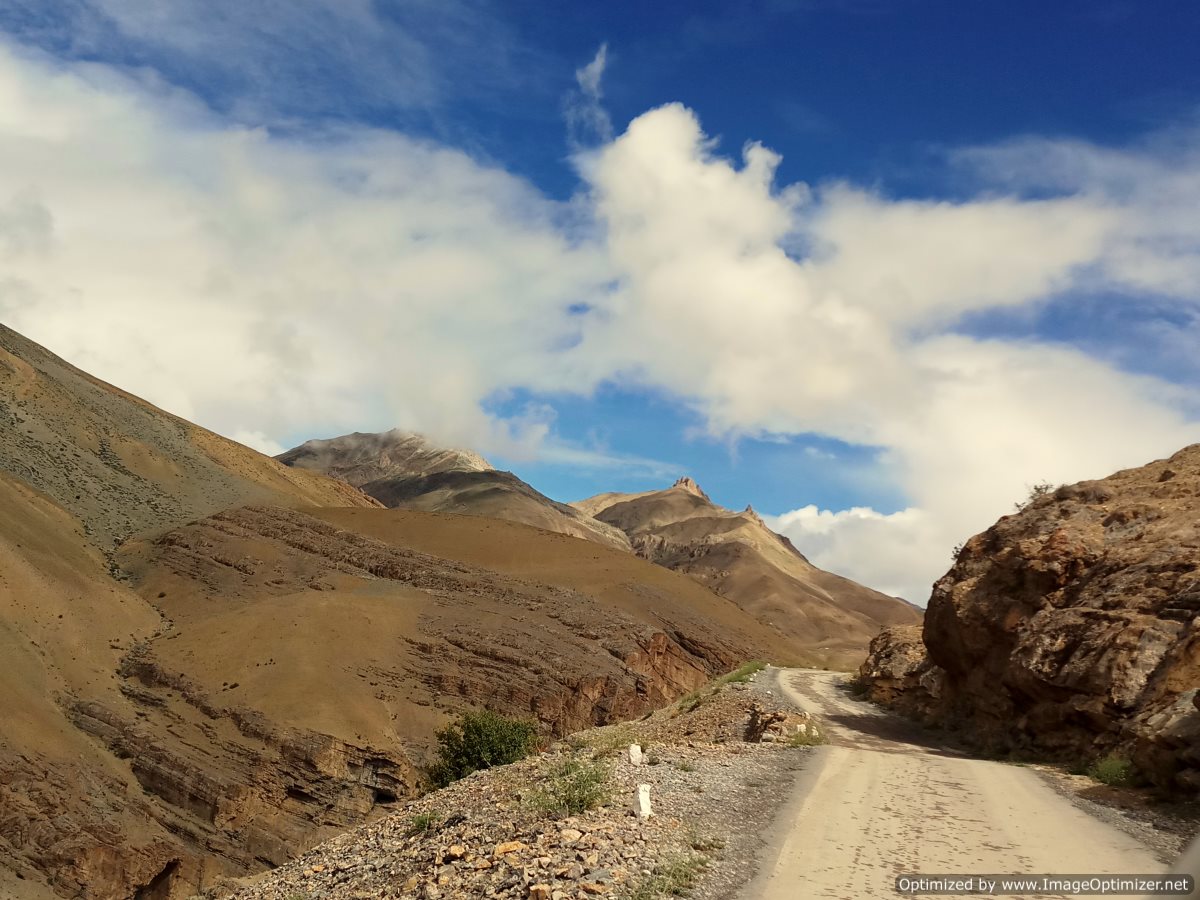
I reached Kaza, from Dhankar, a one hour journey, bringing you from a village perched on the top of a mountain to one by the river. The weather, with the clouds almost descended upon us, made the journey all the more prosaic. The proximity of Spiti to Tibet, has ensured this martian landscape to be dotted with Gumpas and monasteries, the sheer beauty of which, never fails to amaze you. It won’t be hard to find one in the middle of the road, and vehicles taking a full circle of it in reverence. For the next three days I was to be in Kaza to cover some of the most secluded and prettiest villages. And some crowned with their tags of the ‘highest’ and the ‘largest’.
The little knowns of Kaza
Upon first look, Kaza seems a relatively busy town (busier than what you expect a town of 3000 people to be). Small souvenir shops dot the market place, and in the middle stands the Himalayan café, the ‘go-to’ place for all travelers for their supply of caffeine, sandwiches, guide maps, and short but intimate conversations. The last four days had been tiring, a journey of over 1000 kms, from Delhi to Kaza; and I couldn’t resist a thought of good coffee. And just after finding a homestay (Dolma guesthouse, tucked on the road to Kaza monastery) for myself, I headed to refill my spirit with a good dole of caffeine. Thukpa, which by now, I had begun to find irresistible, came as an odd combination. Some amount of reading map, and conversations around places to go, followed by Himalayan Café’s specialty – apple shake, and I felt spirited for the next three days of detours from Kaza.

Kaza serves as a stop-over to some off the road, but on the tourist map, Spitian villages. There is a splendid Key monastery, and as some travelers call it as India’s parallel to the Tiger nest monastery in Bhutan; the small scenic village of KIbber, which turns a sanctuary for wildlife enthusiasts in winters, the world’s highest motorable village of Komik, the fossil village of Langza, and the world’s highest post office at Hikkim. And while you are making plans to cover these places, pencil in some time to cover the Kaza monastery, which stands out as a standing example of Himalayan artistic dexterity.
The temple in the hill
I decided not to rush to cover all the villages in a day as many travelers do, and are advised to do so by the taxi operators. I wanted to stop, breathe in moments, and fill my bag with volley of shots and memories. I kept two days for my Kaza itinerary. On day one, I decided to cover the route taking me from Key monastery, to kibber and Chicham village.
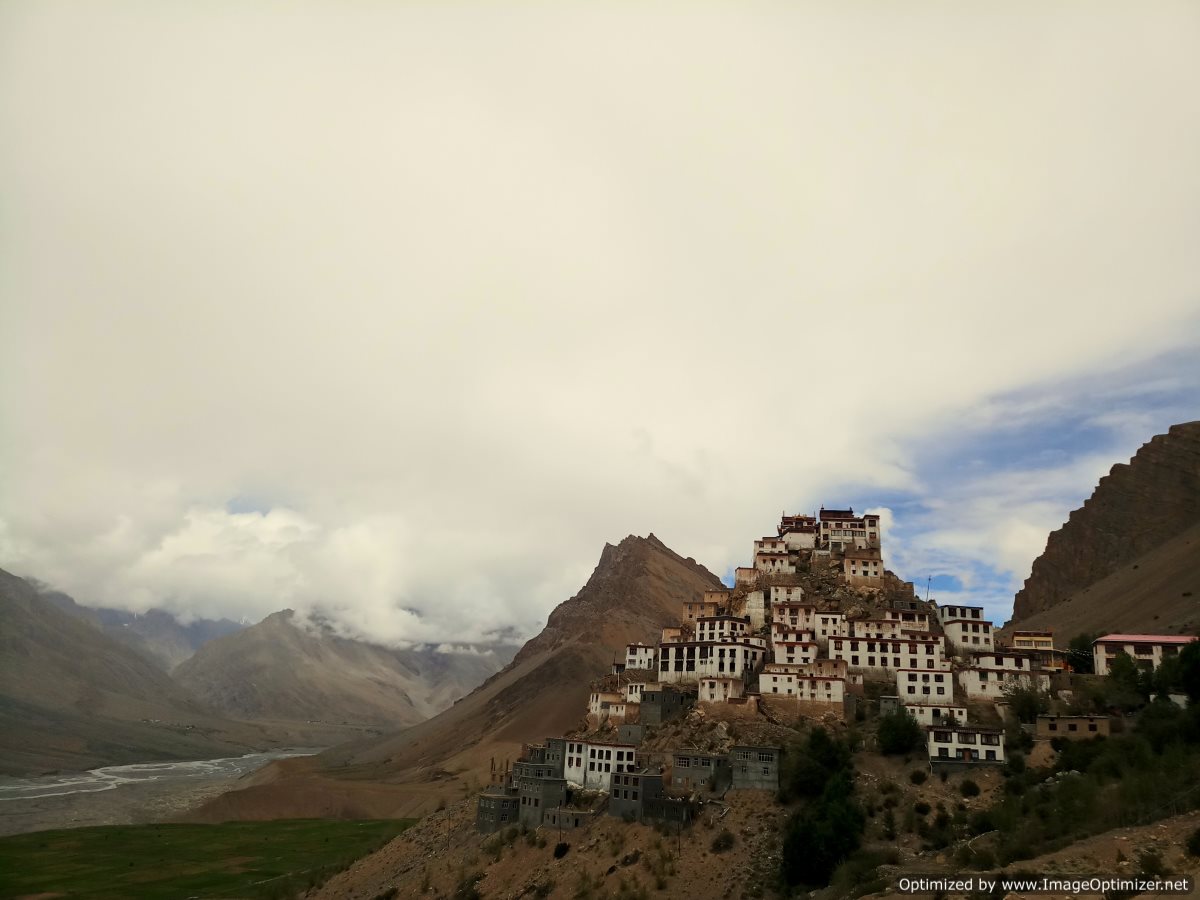
Key Monastery is a must go in the Spiti Valley. It’s the monastery every guide book use as their cover photo for a Spiti trip itinerary. The Key monastery is said to be 1000 years old, and has a fair bit of history. Key Gompa was frequently attacked by the Mongols, such as the 17th century raid during the reign of the fifth Dalai Lama. In the 19th century, it was attacked and looted by various armies engaging in fights in the region. The numerous battle fought between the Kingdom of Ladakh and kullu, destroyed various parts of the monastery. And little had the region recovered, than in the 19th century, the Spiti valley saw a major onslaught by the Dogra rulers of Kashmir. This was followed by a devastating fire in the 1840s. In 1975, a violent earthquake caused further damage to the building. Repeated attacks on the monastery meant frequent renovation, which gave it an irregular box like structure, like a heap of matchboxes. And from a distance, it seems more a fort than a monastery. Regular invasions also meant a haphazard design, with almost no temple resembling the other. There are low rooms and narrow corridors, with dimly lit passages, tortuous staircases, and small doors leading to prayer rooms. The Key monastery is not as finely carved and painted as Tabo, nevertheless, beautiful paintings and murals on the walls, thangkas (a painted or embroidered Tibetan banner), valuable manuscripts, and stucco images, can leave you in a click frenzy mode. There are also some weapons on one side, probably used once to defend the monastery. From a distance, the neatly white-washed houses of the monastery with red bands look extremely picturesque.
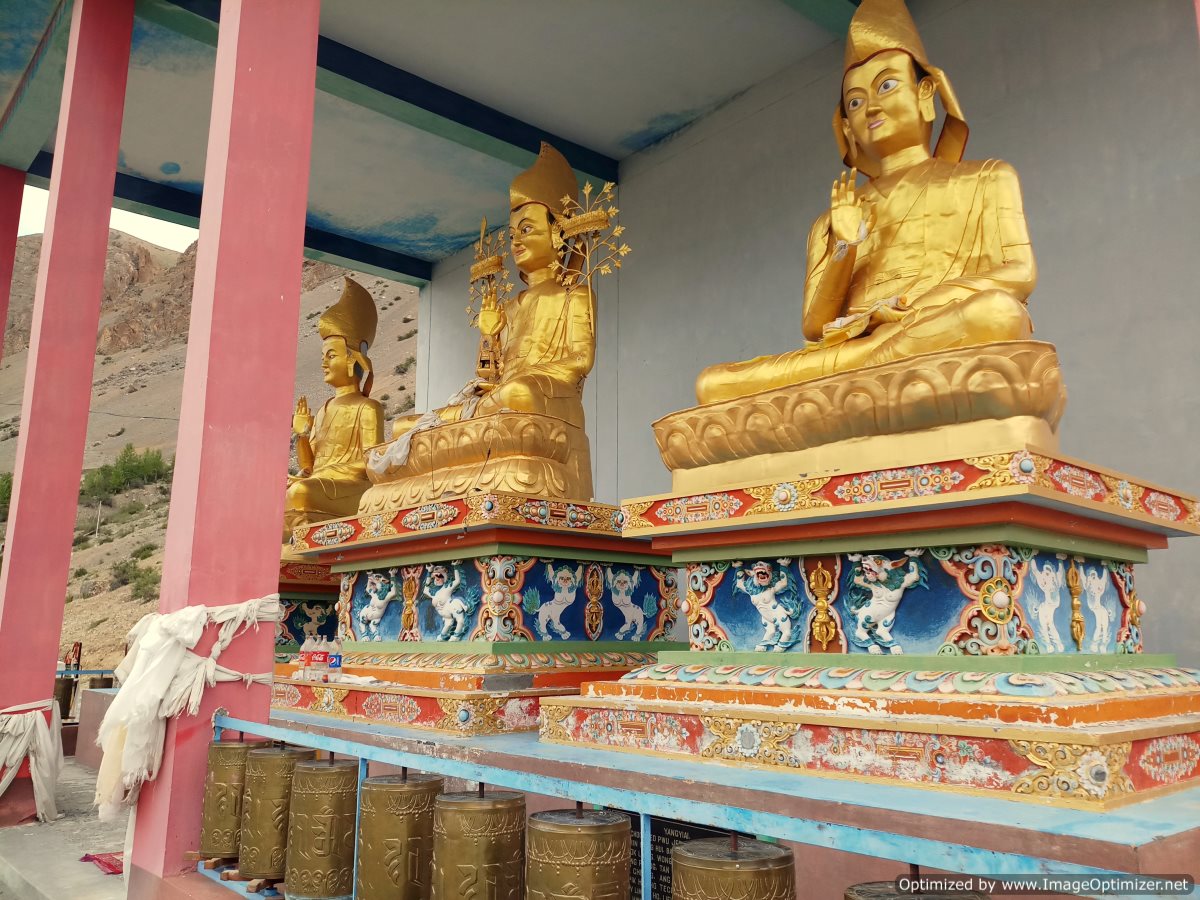
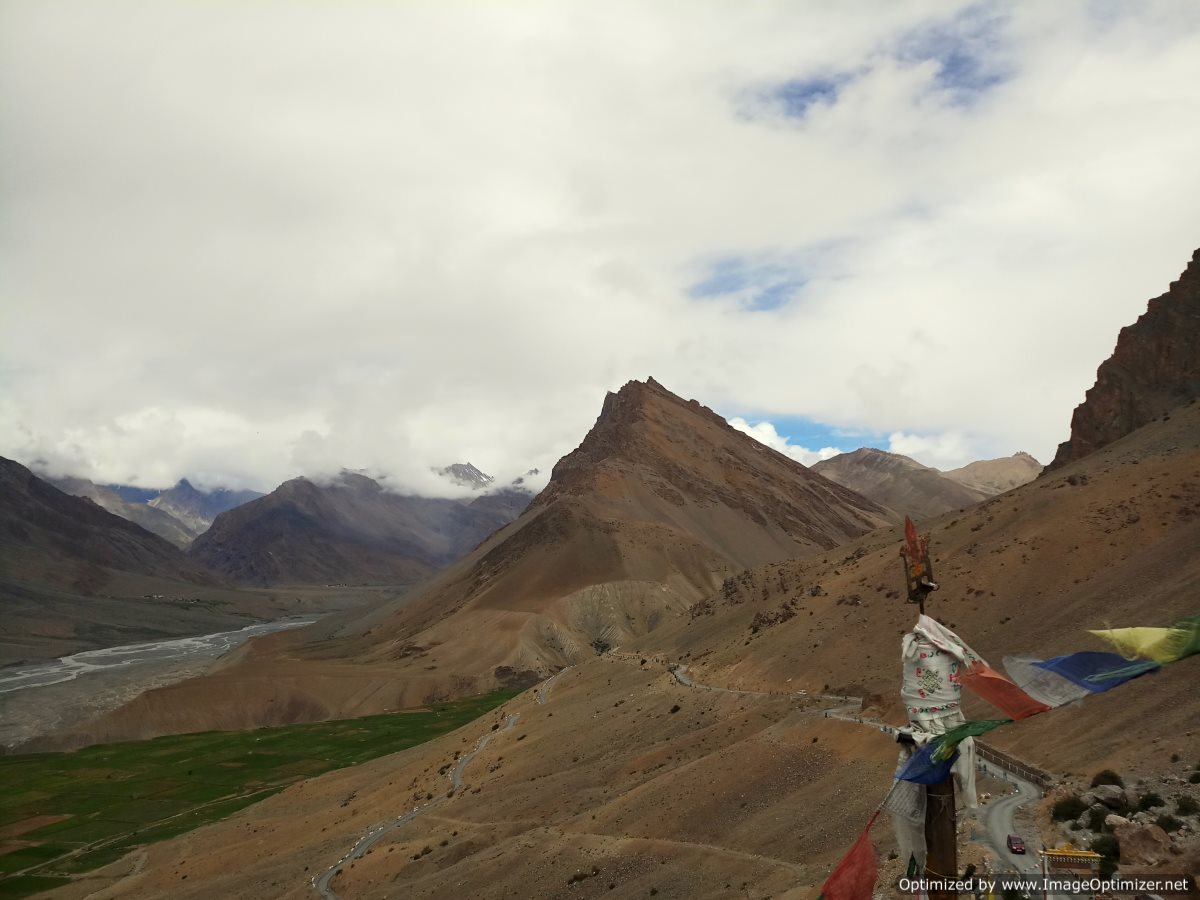
And after the history and culture, I absorbed myself in capturing the beauty of the barren mountains and the Spiti River, snaking its way from between the two ranges. The rooftop of the monastery gives an eagle eye view of Kaza, now looking a crowded town, lacking any conformity in design.
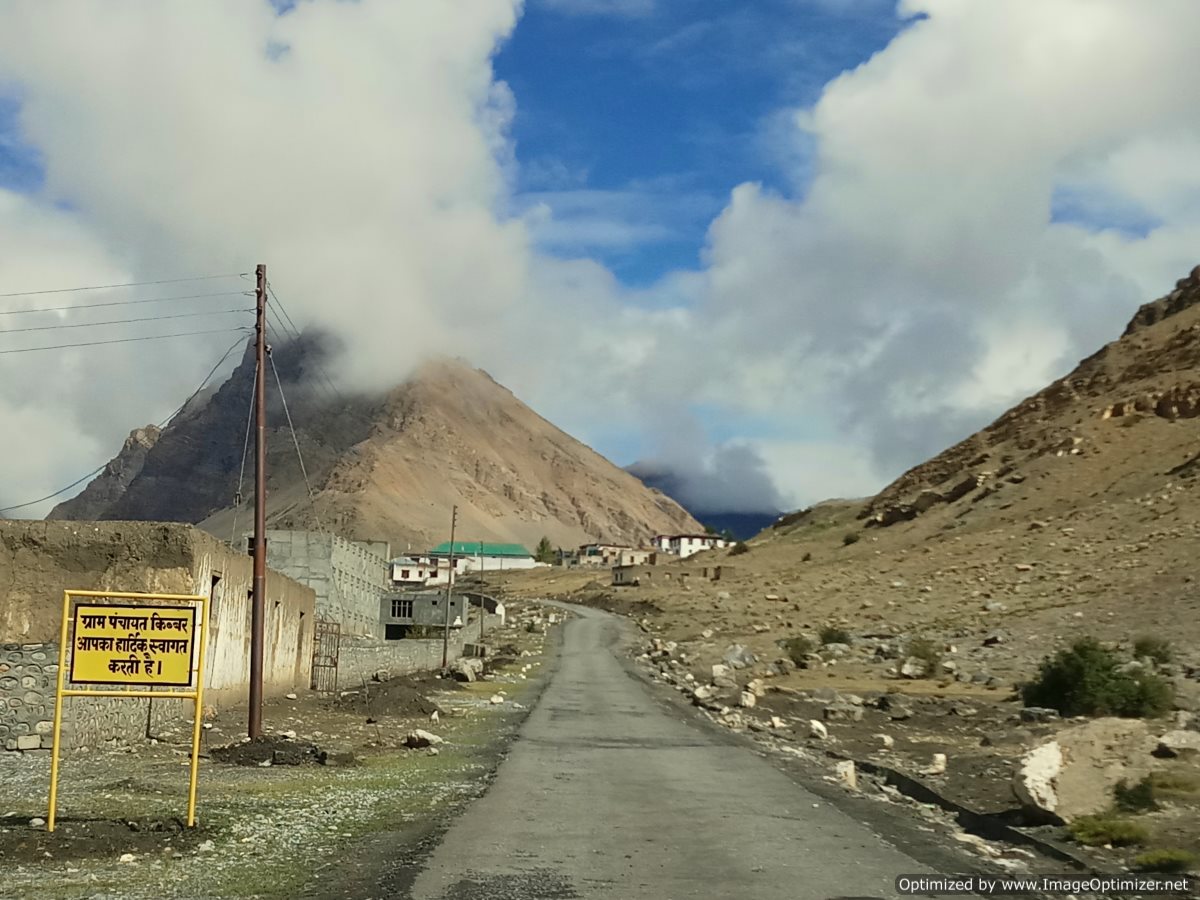
From Key, I made my way to the Kibber village, a ride through probably the best maintained road of Spiti. Nestled up in the Himalayas at a height of 4300 meters, Kibber with just 80 houses, is a village wrapped in silence in a land far away, with beautiful vistas all around. Apart from the tranquility and natural beauty, Kibber doubles up as base for wildlife enthusiasts in winters, who come here to track the elusive snow leopard. Kibber sanctuary was established in 1992, is India’s only wildlife sanctuary in cold desert and is home to several rare animals like Ibex, Blue Sheep, Red Fox, Tibetan woolly hare, Himalayan wolf, lynx, pika, Tibetan wild ass. The most famous of all however is Snow Leopard. Kibber is also famous for huge amount of ancient fossils found here. Most of these fossils are circular in shape with rings on them, often sold in the main Kaza market and beyond as symbols of Lord Vishnu. The fossils are just reminders of the tectonic events that led to crash of Indiana plate against the Eurasian, which led to rise of the mighty Himalayas.
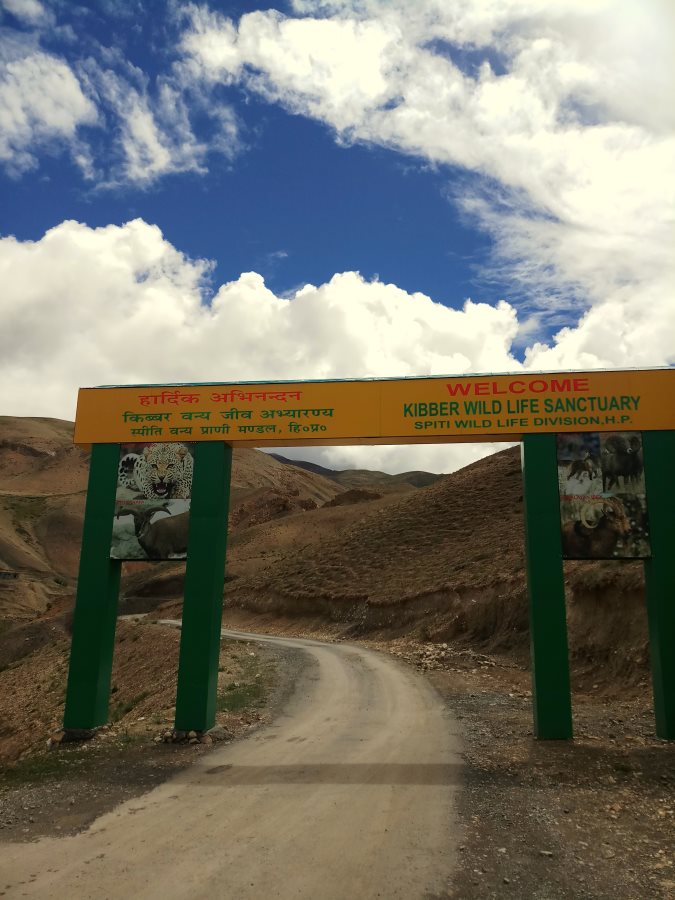
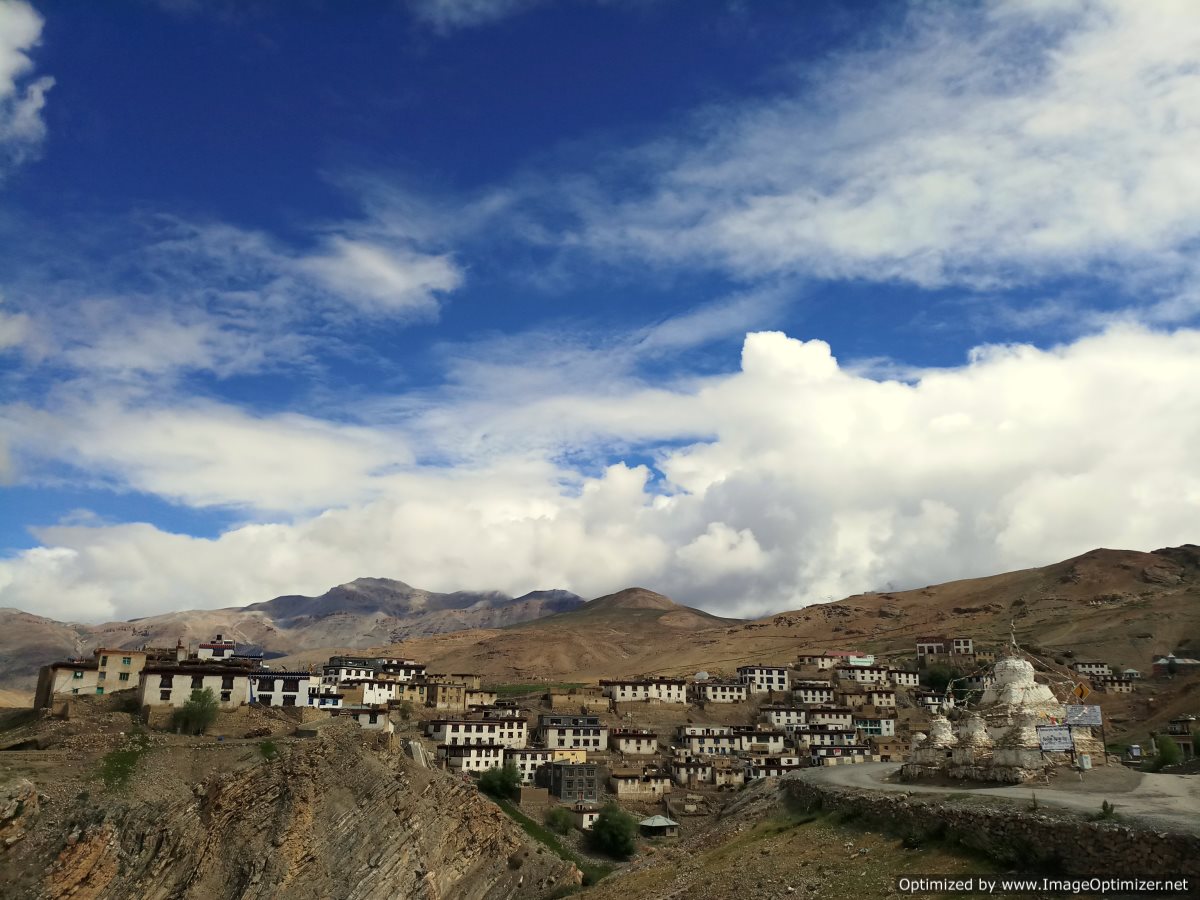
Kibber is also a welcome change from the barren brown of Spiti. The moment you get down from the bus you are greeted by verdant green fields, standing against the lifeless brown of the mountains, which now seem more flat than lofty. Kibber is for its life, simple, tranquil, and novel. Kibber is steeped in spirituality. It’s everywhere. In the prayer flags fluttering in the breeze, in the stupa that stands at the entrance of the village, in the temperamental village devatas, and in the wrinkles of old monks. And spirituality here speaks of an eternal bond, one that man has with the habitat. It can humble you, make you more conscious, and fill you with hope. A little further, the browns change into vibrant greens, the fields are lush green, and I saw Spitian sheep, seemingly belonging to some romantic novella freely grazing on the sides. A gang of Harley Davidson riders, loaded with essentials sped past me, on their way to Chandratal. Huge fluffs of clouds floated in the clear, blue sky in gay abandon. The breeze kissed me with a promise of another spell of rain.
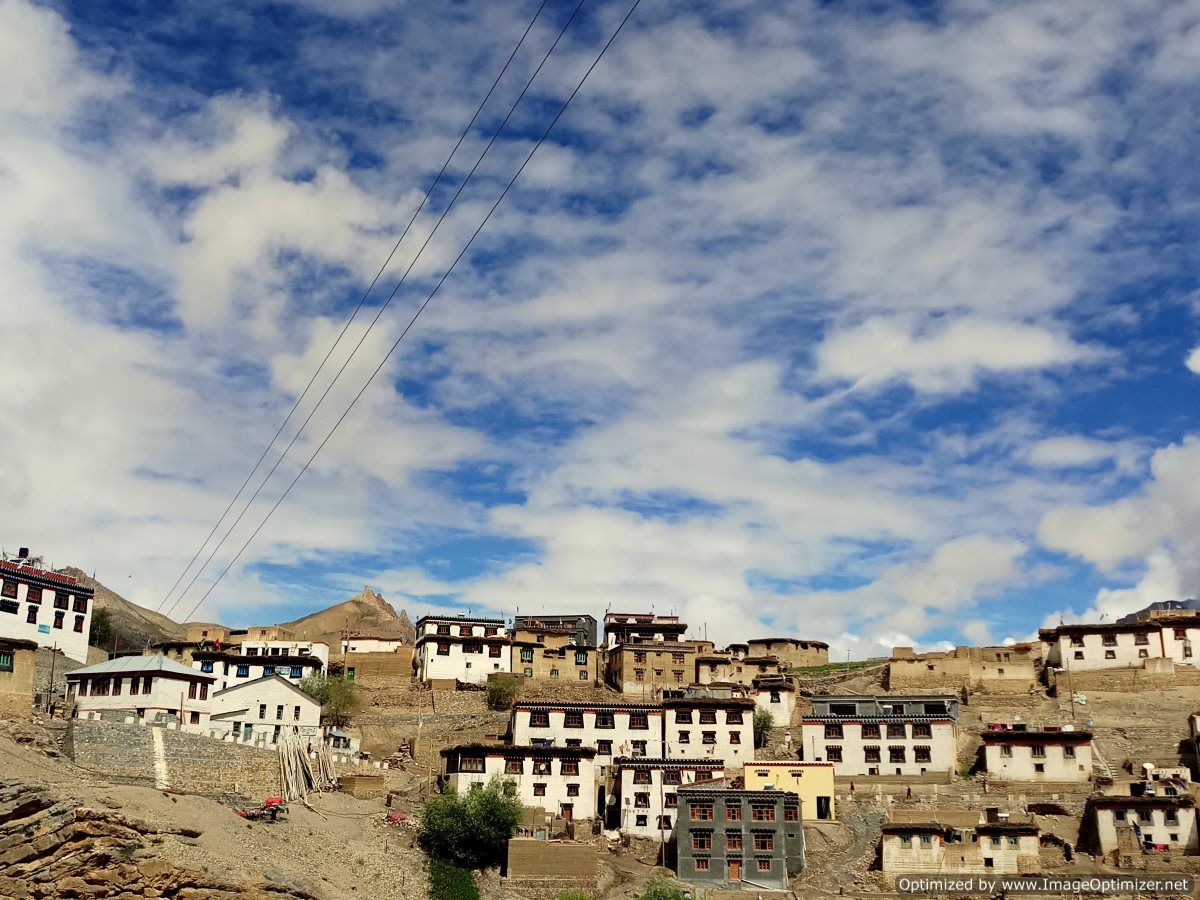
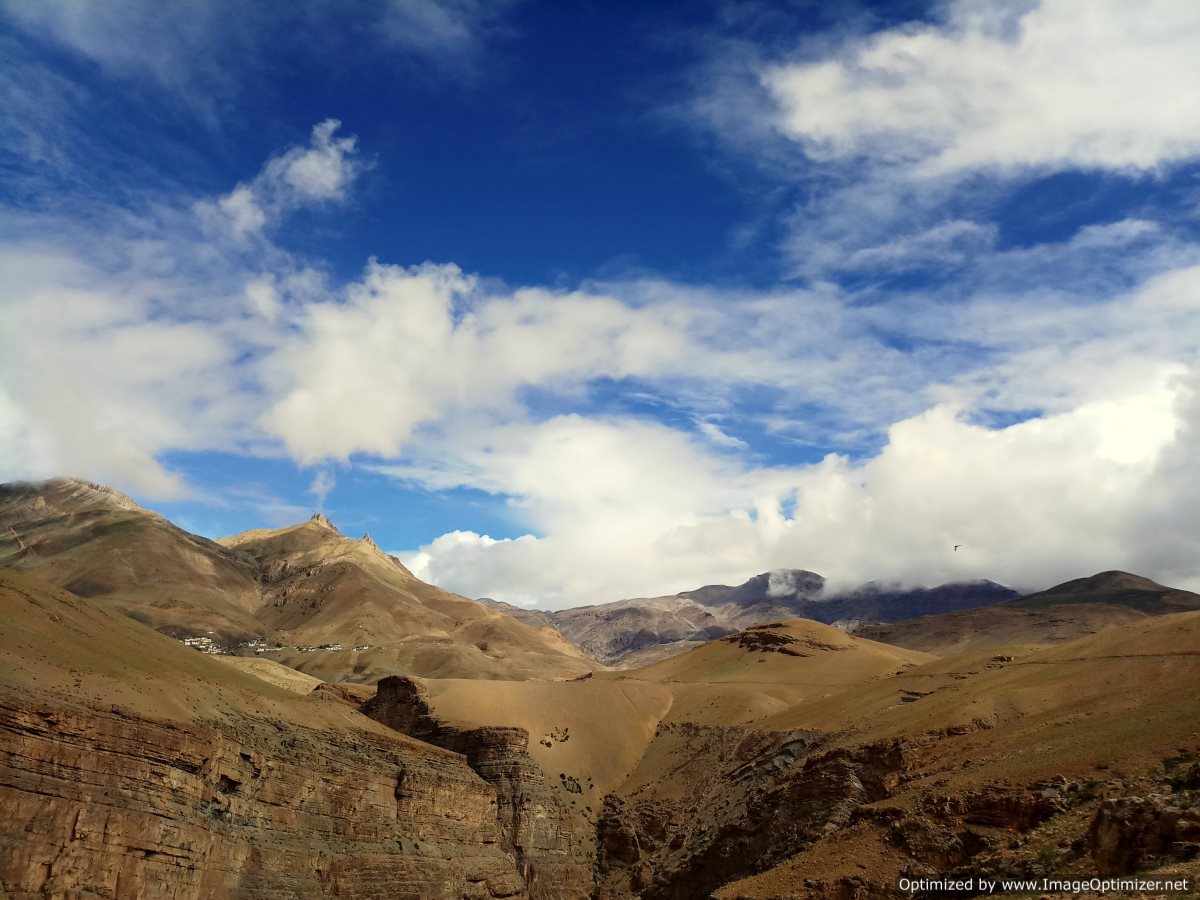
And we drove further, at a distance was the Cheecham village, and the newly built bridge that connects it with Kibber, the highest bridge in the world. I took a walk on the bridge, the river deep in the valley roared, the village spread like tiny dots on the map, following no order, placed randomly to give a sense of design, and the ubiquitous prayer flags spreading the message of love and peace. I spread out my arms, with a thought to embrace all hope the wind carried. For a moment I felt the calling from the barrenness of the land, a calling of possibilities. The moment held a great meaning to me, my thoughts went back to the deep spiritual roots of this land, which makes it so hospitable, conscious, and inviting. There at that height, I found myself looking for answers. But then that’s what I travel for, to discover new worlds, make lasting impressions, and to toggle away this ‘google-knows-all’ world. I was there to discover another shade of me, one deeply hidden in the browns of Spiti.

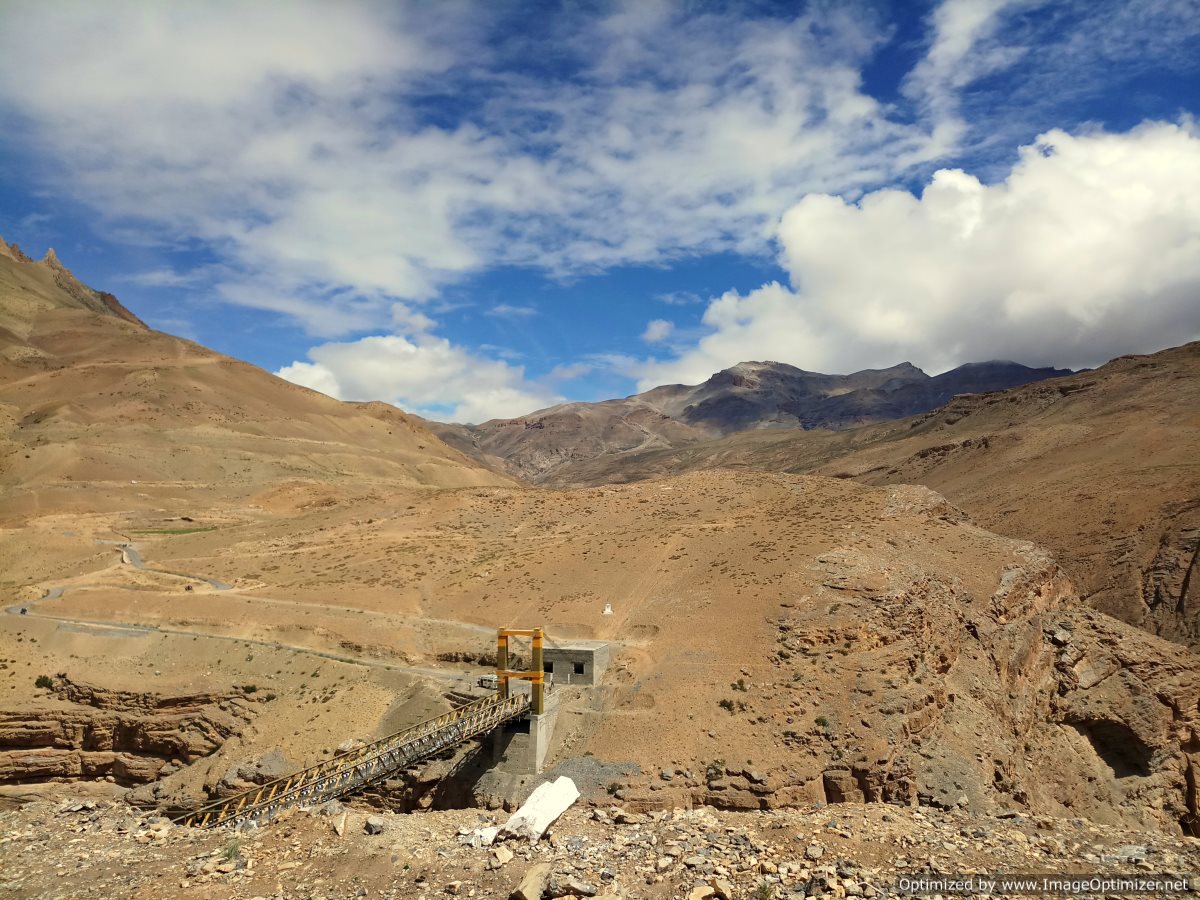
Read more about my Spiti travels: 1) Kalpa and the Kinnaur sojourn 2) Dhankar, the beautiful monastery perched in the highs, and 3) Tabo, the oldest monastery









Enjoyed this virtual travel with you, Akash!
Hey thanks, great to know you enjoyed reading it
[…] 2) Dhankar, the beautiful monastery perched in the highs, 3) Tabo, the oldest monastery, and 4) Key monastery and Kibber […]
👍👌🎶🌷
Amazing pictures..